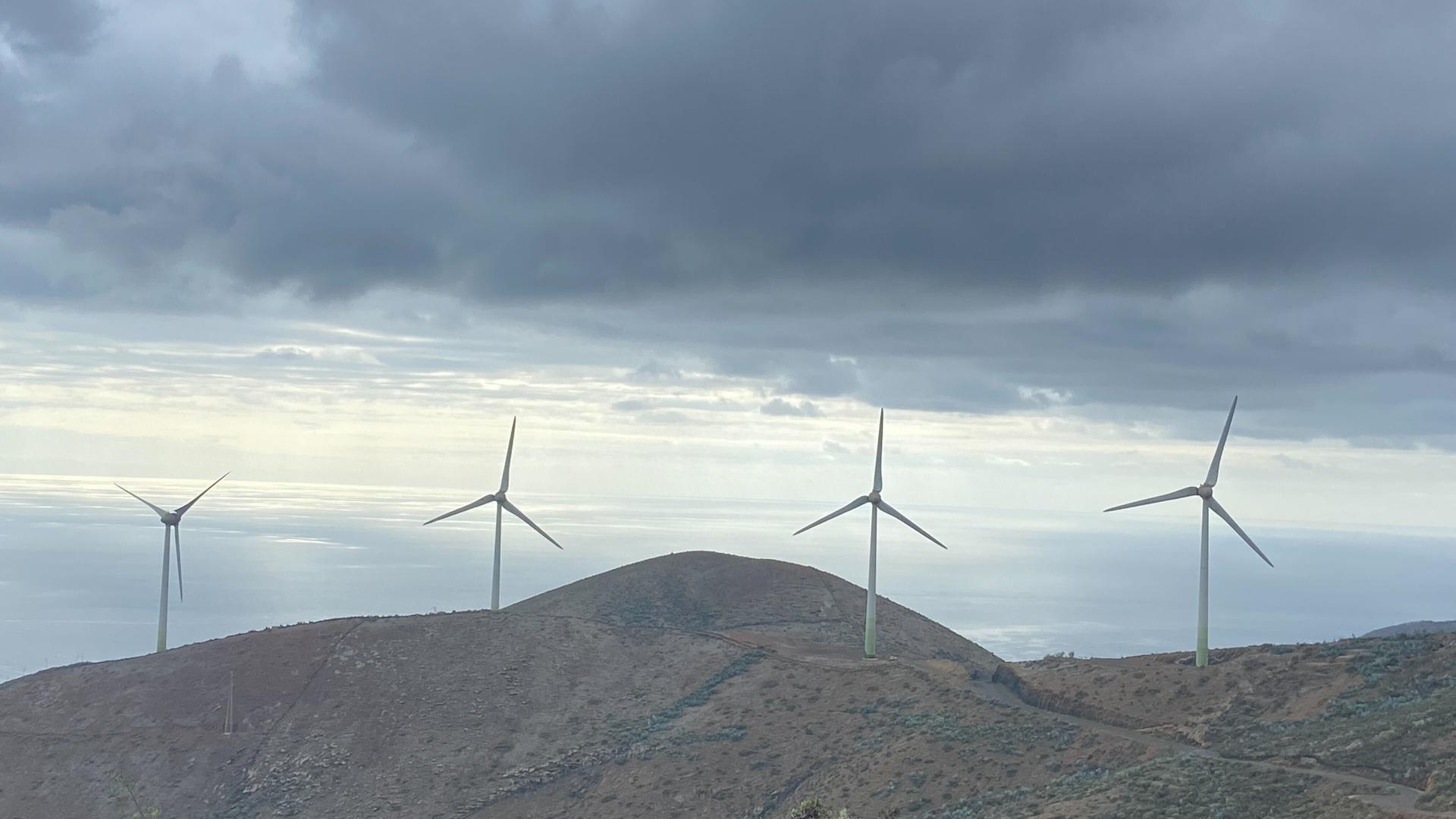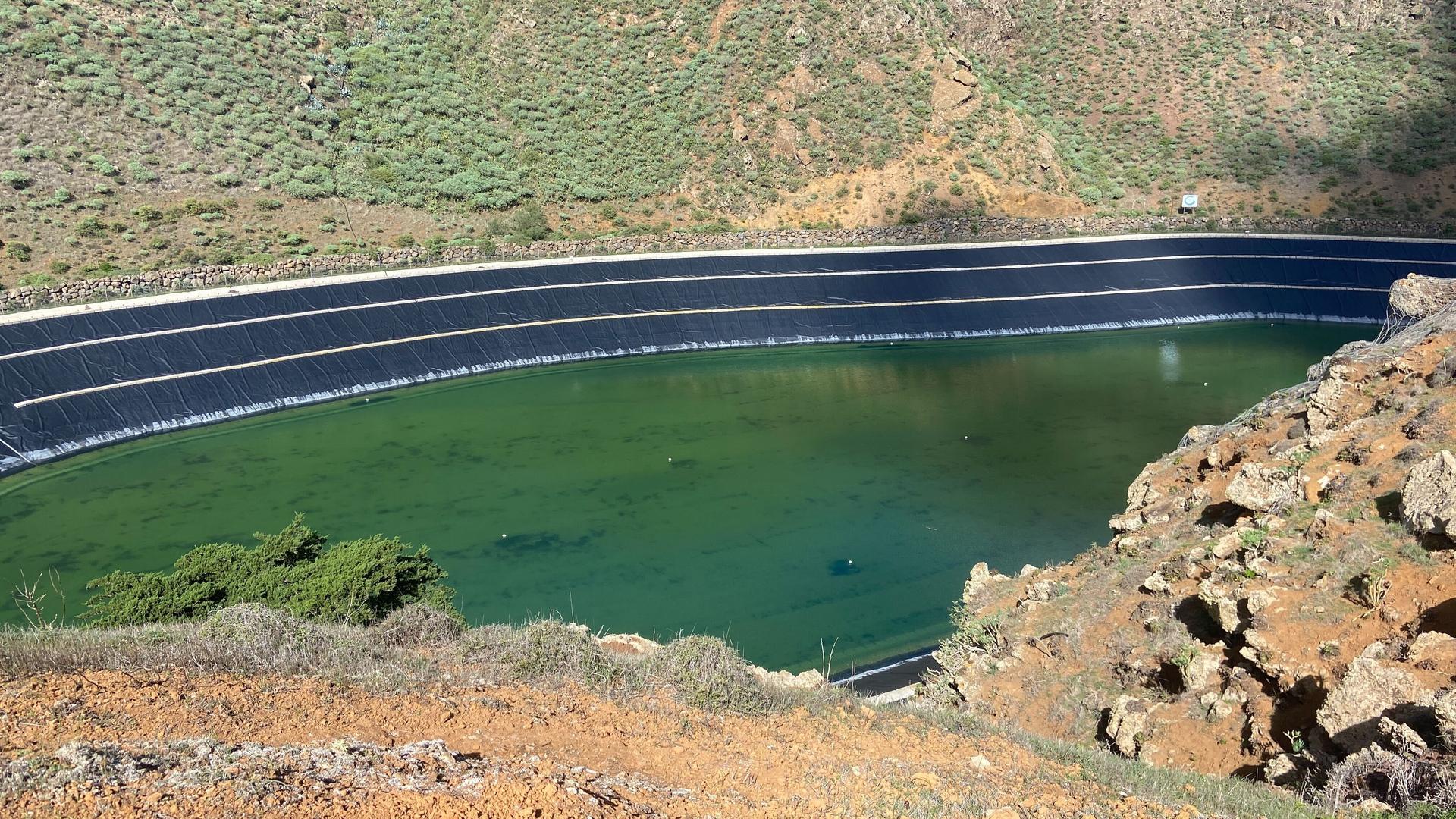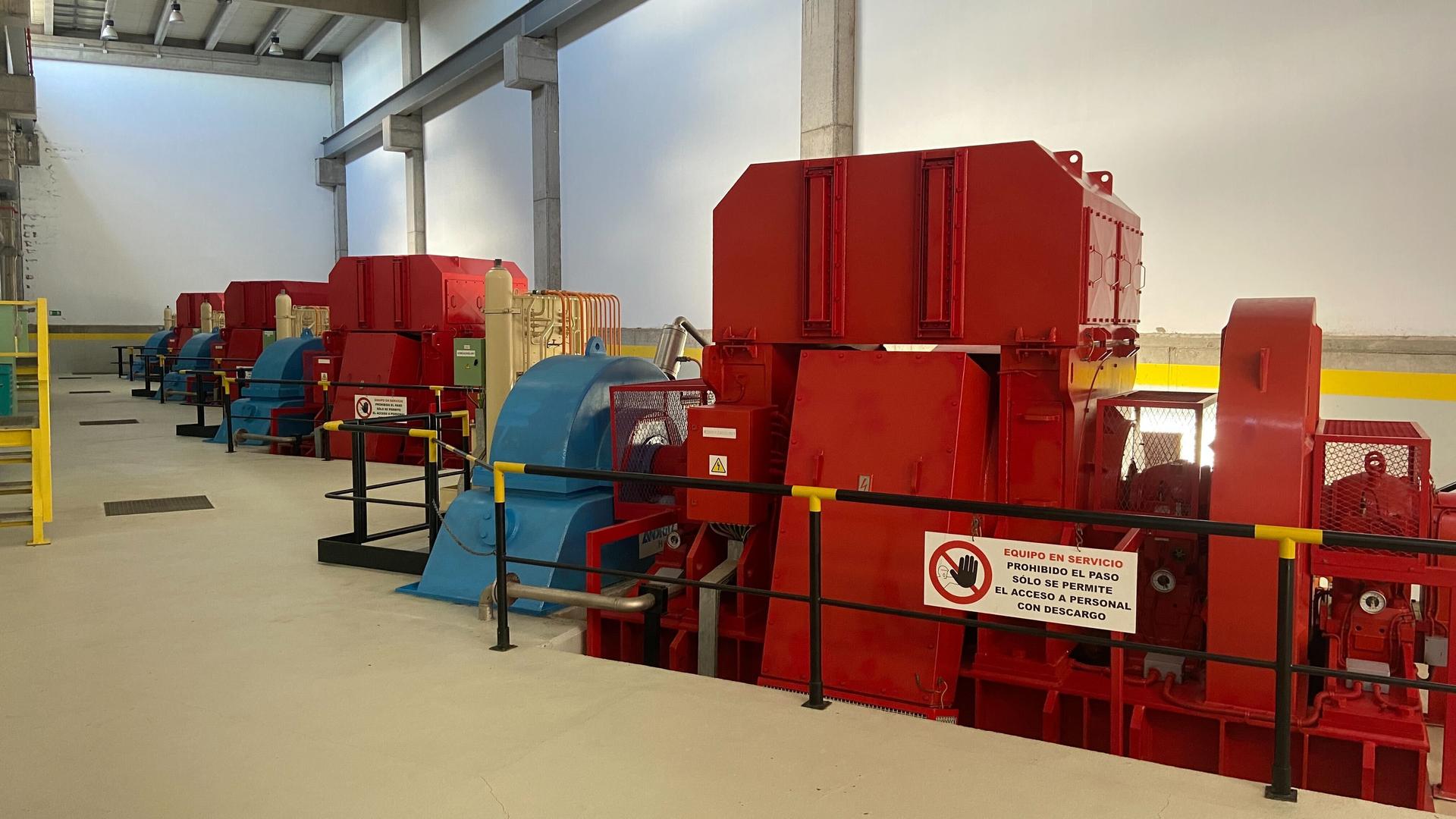In a small coastal village courtyard, at an art event celebrating El Hierro’s volcanic heritage, they’re burning through a lot of power.
They’ve set up a big, brightly lit translucent cube with a dancer inside, and next to it is a slideshow of volcanic landscapes. Then there’s the sound system playing this music.
No one here seems to be thinking about where all this electricity comes from.
Probably because El Hierro has that more than covered.
There are 200-foot wind turbines with white blades that spin high up on a ridge over the Atlantic.
The island has five of them.

They stand at the center of a renewable energy project called Gorona del Viento (Wind-Powered Hydro), aimed at ridding the island entirely of fossil fuels. It’s a public-private outfit with funding from Spain, the European Union and Spanish electricity giant Endesa.
Spokeswoman Cristina Morales said the turbines generate up to 11.5 megawatts of electricity.
That’s more than the island needs — the turbines send half that juice to consumers.
And as for the rest?
“We use it to pump desalinated water — 2,500 cubic liters per hour — from a low reservoir up to another high on the mountainside,” Morales told The World. “Then, we release that water down through turbines. This generates whatever electricity shortfall we might have.”
On a good day, the system can provide 100% of the island’s electricity between wind and water. On days when there’s little wind, they can release more stored water, ramping up hydropower to compensate. If the wind stops altogether, the upper reservoir can keep El Hierro’s lights on for up to three days.

Gorona says it has reduced El Hierro’s dependence on diesel-powered electricity by half in its decade of operation. There are some unique ingredients here that have made this possible. Starting with the people.
Local councilman Antonio Chinea sits on Gorona’s board. He said ideas for self-reliance tend to resonate with El Hierro’s roughly 10,000 residents and that it’s in their DNA.
“We have long had a fend-for-ourselves mentality, being so isolated out at sea,” he said. “There are times when planes and boats cannot reach us due to bad weather, and we have to get by on our own.”
The renewables plan was not only popular — there was lots of money for it from multiple funders who saw the island as a sort of test case — and then there was the wind — the consistent easterlies known as the alisios.
It all added up to a perfect mix that seemed to put total reliance on renewables within reach. But then, the alisios began slowing down a couple of years ago.
“There’s barely a breeze right now,” Chinea said. “It’s not normal for this time of year. It’s hot, and there’s hardly any wind. These periods of still air are becoming more frequent.”
This stagnation causes wind energy, and thus hydropower, to drop.
Gorona officials and locals blame the decreasing winds on what this whole renewables project was set up to combat: climate change.
Inside Gorona’s hydroelectric station, six huge red pumps stand at the ready. But the only sound you can hear is from the cooling fans. Many days have passed without enough wind to wake these giants.

“I am not pessimistic about the future,” Gorona’s Cristina Morales said. “But as a company, we do need to start adapting to these planetary changes.”
Now that the winds are calming, Gorona is pivoting.
The public-private partnership overseeing El Hierro’s energy transition is offering big subsidies for solar panels and encouraging individuals to install them on their homes. With each panel, the demand on Gorona’s lagging energy plant lessens.
Solar panels installer Marcos Sanchez said he’s crushed under his orders.
In fact, to meet strict timelines attached to subsidies, he said he’s forced to leave some installations nearly finished and then come back to button things up later.
That’s what he was doing as The World caught up with him.
“This installation works,” Sanchez said, climbing up to a six-panel setup on a client’s garage roof. “But, look, those dangling cables shouldn’t be visible. They’re carrying 700 volts of current. If something goes wrong here, it could be catastrophic.”
Once done, Sanchez speeds off to his next job in his diesel truck.
The island has transportation in its sights as well. Gorona now subsidizes electric vehicles. People are snapping them up — and charging them for free at new stations around the island.
On a recent lunch break, local travel agent Divinia Carballo unplugged her red Opel Corsa from a station near her office. She said the island desperately needs more charging points.
There are only about a dozen.
Carballo added that people also need to learn some renewable energy etiquette.
“There are people who plug in their car at a public charger in the evening and don’t unplug until the morning,” she said. “You need to be a little bit aware that other people are waiting to charge up, too.”
Small inconveniences aside, Carballo said the island’s transition to renewables in recent years has given people hope and a sense of purpose.
But the worry remains.
Are the diminishing winds a temporary blip … a lasting consequence of a warming planet?
The World is an independent newsroom. We’re not funded by billionaires; instead, we rely on readers and listeners like you. As a listener, you’re a crucial part of our team and our global community. Your support is vital to running our nonprofit newsroom, and we can’t do this work without you. Will you support The World with a gift today? Donations made between now and Dec. 31 will be matched 1:1. Thanks for investing in our work!
